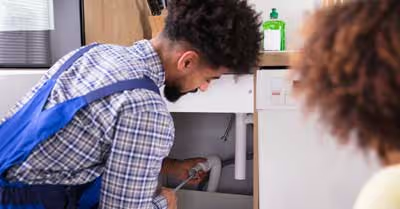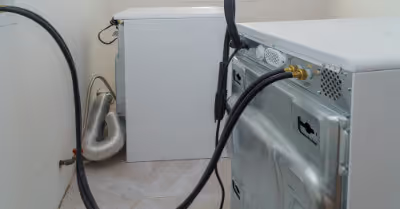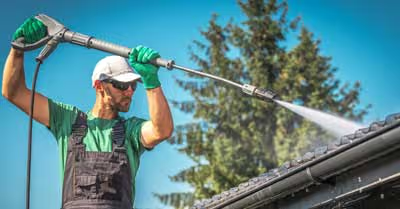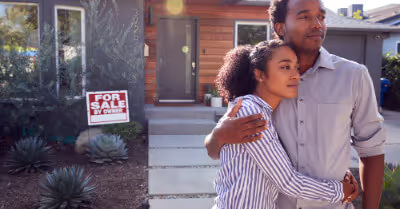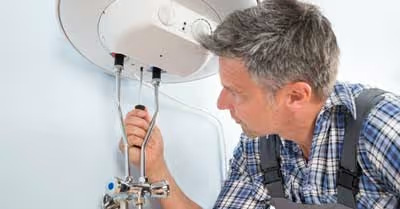Table of Contents
Benefits of Wallpaper
There are lots of great reasons to choose wallpaper over paint. Many of them go against the negative thinking that often accompanies the word “wallpaper.”
Durability
Wallpaper will last 10 to 15 years which is longer than paint. Paint will get cracks and chips quickly and you need to clean it often. Sure, there are times when you should go with paint, but you should always keep wallpaper in your list of options.
Wallpaper is also easy to clean with a cloth or sponge. Some wallpapers can even withstand harder scrubbing with a brush.
Hides Your Wall
Do you have walls that have scratches, cracks, or other damage? Well wallpaper can cover up those imperfections and make the wall look just like new.
Easy to Apply and Remove
There is a misconception that wallpaper is difficult to remove and replace, but it is actually very easy and anybody can do it if they know how.
Textures and Patterns
Wallpaper is a great way to add personality to a room because your texture and pattern options are limitless. Wallpaper can add a lot to a room that paint can’t. This can give your house the unique look you’ve always wanted.
How to Remove Wallpaper
You should remove your current wallpaper before replacing it. This will help the new wallpaper stick correctly and lay flat against the wall. Even if you plan on painting, you still need to know how to remove the old wallpaper first.
Sure, it is possible to apply wallpaper on top of your existing paper, but sometimes it doesn’t stick well or could have bubbles or crinkles. For a long lasting and well applied wallpaper, you should first use these steps to remove the old paper.
To remove you old wallpaper, you will only need a few things:
- Paint scraper or putty knife
- Scrub brush
- Sponge
- Spray bottle
- Dish soap and/or all-purpose cleaner
- Wallpaper steamer (useful, but optional)
The first step is to remove as much of the wallpaper as possible using a paint scraper or putty knife. It is important to be careful around the corners.It helps to spray the paper with hot water because it loosens the paper from the glue.
You can add all-purpose cleaner to the water to make the process even easier. Another option is to get a wallpaper steamer to loosen the paper before removing it.
Once you have most of the paper removed, you can spray any remaining areas down with the hot water and scrape the remaining pieces of paper off. Don’t worry about scratching the wall because you will have to paint or add new wallpaper anyways. You can even use a scoring tool for the most stubborn spots.
One tip is to start at the corners of the paper and work your way around.
You will likely have some glue left on your wall after you remove the paper. It is important that you know how to remove the remaining glue as well.
Mix hot water with dish soap and spray it directly onto the remaining adhesive. It may also be necessary to add a touch of baking soda. Then, spread the solution all over the wall using a sponge.
This solution will loosen and deteriorate the glue so that you can easily wipe or scrape it away. If you can’t seem to get it all off, you can buy adhesive remover. Now you will be ready to apply your gorgeous, new wallpaper!
Prep Work
The amount of prep work you need to do depends on your specific walls. Whether you walls are old or new, drywall or plaster, we have you covered!
Drywall
To prep painted drywall, you need to wash them with soap that is made for multi-surfaces or specifically drywall. Also, you need to let it dry completely before moving forward with your project.
If your drywall has damage like dents, holes, or cracks you can fill them with vinyl spackle. Wait for the spackle to dry, then use wet sandpaper to smooth it down. If you have textured walls, you need to use coarse sandpaper to smooth them down.
Now you can paint on acrylic primer to get it reader for new wallpaper. If the walls are new and have not been painted before, you should use an alkyd primer before the acrylic one to protect against mildew and mold.
Plaster
Plaster is most common on older homes. You can use a joint compound to repair any damages. Then, just like with new drywall, you should apply alkyd primer and then cover that with acrylic primer.
It is also necessary to use wallpaper sizing before applying wallpaper on plaster. This will make your entire job easier.
Wood Paneling
Wood paneling requires a little more than other types of walls. First, you have to wash the panels down with a de-glossing solution.
Wood paneling has grooves in between each of the panels. You need to fill these up and make them smooth before you can apply new wallpaper. You can use spackling and then smooth it down with sandpaper because it doesn’t have to look pretty, it just needs to be smooth for the wallpaper to adhere to.
Once you have sanded down the spackle, you can apply primer to finish preparing the wood paneling for wallpaper.
Textured Walls
Sometimes, sanding just won't cut it for walls with heavy texture. In this case, you can use lining paper that your wallpaper can lay against. This is the only good option if your walls are too textured to make smooth with a scraper and sandpaper.
You may be wondering how much wallpaper you will actually need. It is important to buy extra for mistakes and future touch-ups. You should also include any windows and doors into your surface area calculations.
Measure the length and height of every wall and multiply them by each other. Add the surface area of each wall together to get the total for your room. Then, add 10% extra and divide your number by the amount in each roll. The typical double roll comes with 66 square feet, but it is important that you check the amount on the roll you wish to buy.
Where to Begin
It is important to begin at one spot and work your way around the room until you get to the original piece you applied. It is highly unlikely that you will be able to line the first and last pieces perfectly.
Because of this, you should hang the first strip of wallpaper in a place where the meeting point will be less noticeable. For example, you can start on the wall that will be covered up when the door is opened.
One you know where to begin, it is a good idea to pre-cut your wallpaper to size leaving an extra 4 inches on each strip.
Booking
Booking is a folding process that any DIY wallpaper installer needs to know. First, you need to know what type of adhesive you plan on using. Pre-mixed clear glue is easy to use and messes will not show as badly. However, the glue you use may depend on the type of wallpaper you are applying.
Booking is a necessary step for any good wallpaper job because it lets the glue to soak in and makes the paper easier to manage. Start by taking your first strip and laying it down on a flat surface with the front, or pattern side, facing down.
Use a pencil to make a mark in the middle of the paper, and roll adhesive on one half of the paper. Only use a thin layer of adhesive.
Then you will fold the paper without creasing. Start with the half of the paper that has glue up. Take it and fold it over the other half so the pattern is facing up. Then, wait for it to cure which should take about 3 minutes. You will have about 15 minutes before the glue dries to hang your strip of wallpaper, but that is enough time to get the job done.
The hanging job will be much easier after booking so don’t skip this step.
Hanging
It is very important to make sure your wallpaper will be hanged straight. It is very easy to have a crooked strip of wallpaper and sometimes it is barely noticeable with the naked eye. I recommend hanging a plumb line from the ceiling and then marking it on the wall to ensure a perfectly straight strip.
Take the strip that you just booked and line it up with the pencil mark on the wall. Leave a slight overhang on the top and bottom. You should start by affixing the top and working your way down. Smooth it down slowly with your hand making sure there are no bubbles or creaces.
When placing a new strip next to one that is already on the wall, make sure the seam is as small as possible. Using both hands on the new strip, move it up and down until the pattern is lined up. Then, slide it over until the edges of both strips are meeting together and line up the pattern.
Smooth down the seam and then wait about 15 minutes before using a paper roller to smooth out the seam to perfection. Now you should trim any overhanging paper.
Lastly, some patterns are easier to line up than others. Make sure to pick a pattern you like that you are also able to line up without too much effort.
Corners
It may be tempting to crease paper into a corner, but it won’t stick well or look as nice. Instead, cut the strip so that only ½ inch is overhanging across the corner.
After you hang the strip you can trim it down even more. You should try to trim it so that only an ⅛ inch is overhanging after you glue the paper down. Now, you can easily cover up the ⅛ inch with the next strip you hang.
Tips and Tricks
De-curl Paper
Since wallpaper comes in a roll, sometimes the paper will tend to curl even after you cut it. To reduce the curling, roll it in the other direction. This will make it easier to book and hang.
Trimming
When trimming along the edge of the ceiling, it will be easier to press a utility knife against the paper you want to trim with a putty knife. This will give you a smooth and even cut by giving you the hard edge of the putty knife to work against.
Roll on Paste
Using a roller to apply the adhesive will save you time while also giving you a uniform layer. Not only that, but dunking or using a brush tends to be messier.
Remove Bubbles
No matter how careful you are when hanging your wallpaper, you may still end up with bubbles. Wait until the adhesive is completely dry before fixing them. You can use a glue syringe to add a few drops into a small hole in the bubble. Then you can smooth it down to have a uniform wall.
Recent Articles



